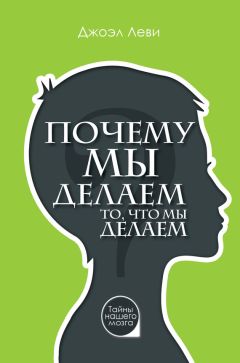Ознакомительная версия.
Документальный сериал «Расследования авиакатастроф» (Mayday).
U. S. Summary Comments on Draft Final Report of Aircraft Accident Flash Airlines Flight 604, Boeing 737–300, SU-ZCF.
Adelson E. H. Lightness Perception and Lightness Illusions // The New Cognitive Neurosciences. Cambridge, MA: MIT Press, 2000. P. 339–351.
Thompson P. Margaret Thatcher: A New Illusion // Perception. 9 (1980). P. 483–484.
Kanwisher N., McDermott J., Chun M. M. The Fusiform Face Area: A Module in Human Extrastriate Cortex Specialized for Face Perception // Journal of Neuroscience. 17; 11 (1997). P. 4302–4311.
Sacks O. The Man Who Mistook His Wife for a Hat // New York: Pikador, 1970. [Сакс О. Человек, который принял жену за шляпу, и другие истории из врачебной практики. М.: АСТ, 2011.]
Ekman P. Emotions Revealed: Understanding Faces and Feelings. London: Weidenfeld & Nicolson, 2003.
Бой Джордж (наст. имя – Джордж Алан О’Дауд) – британский певец и композитор, один из пионеров музыкального направления New Romantic («Новая романтика»).
Rhodes G. et al. Expertise and Configural Coding in Face Recognition // British Journal of Psychology. 80 (1989). P. 313–331.
Ibid.
Adachi I., Chou D. P., Hampton R. R. Thatcher Effect in Monkeys Demonstrates Conservation of Face Perception Across Primates // Current Biology. 19; 15 (2009). P. 1270–1273. doi:10.1016/j.cub.2009.05.067
Alicke M. D., Govorun O. The Better-Than-Average Effect // The Self in Social Judgment. Alicke M. D. et al. (eds.). New York: Psychology Press, 2005. P. 85–108.
Swenson O. Are We All Less Risky and More Skillful Than Our Fellow Drivers? // Acta Psychologica. 47; 2 (1981). P. 145–146. doi:10.1016/0001–6918(81)90005–6
U. S. Summary Comments on Draft Final Report of Aircraft Accident Flash Airlines Flight 604, Boeing 737–300, SU-ZCF.
Pronin E., Lin D. Y., Ross L. The Bias Blind Spot: Perceptions of Bias in Self Versus Others // Personality and Social Psychology Bulletin. 28 (2002). P. 369–381.
Из презентации Эмили Пронин (Project on Law and Mind Sciences (PLMS) Conference, Harvard Law School, March 8, 2008).
Collins D. Scalia-Cheney Trip Raises Eyebrows // CBS News. January 17, 2003.
См.: Lithwick D. Sitting Ducks // Slate. February 3, 2004.
Pronin E., Kugler M. B. Valuing Thoughts, Ignoring Behavior: The Introspection Illusion as a Source of the Bias Blind Spot // Journal of Experimental Social Psychology. 43 (2006). P. 565–578.
Wilson T. D. Strangers to Ourselves: Discovering the Adaptive Unconscious. Cambridge, MA: Belknap Press, 2002. P. 159–182.
Johansson P. et al. Failure to Detect Mismatches Between Intention and Outcome in a Simple Decision Task // Science. 310; 5745 (2005). P. 116–119. doi:10.1126/science.1111709
Ibid.
Hall L., Johansson P. Using Choice Blindness to Study Decision Making and Introspection // A Smorgasbord of Cognitive Science. Gärdenfors P. and Wallin A. (eds.). Nora, Sweden: Nya Doxa, 2008. P. 267–283.
Ibid.
How to Make Better Decisions // Horizon, BBC. February 2008.
Wilson T. D., Schooler J. W. Thinking Too Much: Introspection Can Reduce the Quality of Preferences and Decisions // Journal of Personality and Social Psychology. 60; 2 (1991). P. 181–192.
Nordgren L. F., Dijksterhuis A. The Devil Is in the Deliberation: Thinking Too Much Reduces Preference Consistency // Journal of Consumer Research: An Interdisciplinary Quarterly. 36; 1 (2009). P. 39–46.
Raby C. R. et al. Planning for the Future by Western Scrub-Jays // Nature. 445; 7130 (2007). P. 919–921. doi:10.1038/nature05575
Morell V. et al. Nicola Clayton Profile: Nicky and the Jays // Science. 315; 5815 (2007). P. 1074–1075.
Raby C. R. et al. Planning for the Future by Western Scrub-Jays; Clayton N. S., Bussey T. J., Dickinson A. Can Animals Recall the Past and Plan for the Future? // Neuroscience. 4; 8 (2003). P. 685–691. doi:10.1038/nrn1180; Correia S. P. C., Dickinson A., Clayton N. S. Western Scrub-Jays Anticipate Future Needs Independently of Their Current Motivational State // Current Biology. 17; 10 (2007). P. 856–861. doi:10.1016/j.cub.2007.03.063
Tulving E. Episodic Memory: From Mind to Brain // Annual Review of Psychology. 53 (2002). P. 1–25. doi:10.1146/annurev.psych.53.100901.135114
Bischof-Köhler D. Zur Phylogenese menschlicher Motivation // Emotion und Reflexivität. Eckensberger Lutz H. et al. Munich: Urban & Schwarzenberg, 1985. P. 3–47.
Suddendorf T., Corballis M. The Evolution of Foresight: What Is Mental Time Travel, and Is It Unique to Humans? // Behavioral and Brain Sciences. 30; 3 (2007). P. 313–351. doi:10.1017/S 0140525X07001975; Roberts W. A. Mental Time Travel: Animals Anticipate the Future // Current Biology. 17; 11 (2007). P. R 418–420. doi:10.1016/j.cub.2007.04.010
Suddendorf T., Corballis M. The Evolution of Foresight: What Is Mental Time Travel, and Is It Unique to Humans? // Behavioral and Brain Sciences. 30; 3 (2007). P. 313–351. doi:10.1017/S 0140525X07001975
Raby C. R. et al. Planning for the Future by Western Scrub-Jays // Nature. 445; 7130 (2007). P. 919–921. doi:10.1038/nature05575
Dally J. M., Emery N. J., Clayton N. S. Food-Caching Western Scrub-Jays Keep Track of Who Was Watching When // Science. 314. 5780 (2006). P. 1662–1665. doi:10.1126/science.1126539
Correia S. P. C., Dickinson A., Clayton N. S. Western Scrub-Jays Anticipate Future Needs Independently of Their Current Motivational State // Current Biology. 17; 10 (2007). P. 856–861. doi:10.1016/j.cub.2007.03.063
Raby C. R. et al. Planning for the Future by Western Scrub-Jays // Nature. 445; 7130 (2007). P. 919–921. doi:10.1038/nature05575
Morell V. et al. Nicola Clayton Profile: Nicky and the Jays // Science. 315; 5815 (2007). P. 1074–1075.
Bird L. R. et al. Spatial Memory for Food Hidden by Rats (Rattus norvegicus) on the Radial Maze: Studies of Memory for Where, What, and When // Journal of Comparative Psychology. 117 (2003). P. 176–187.
Zentall Th. R. Mental Time Travel in Animals: A Challenging Question // Behavioral Processes. 72; 2 (2006). P. 173–183. doi:10.1016/j.beproc.2006.01.009
McKenzie T. et al. Can Squirrel Monkeys (Saimiri sciureus) Plan for the Future? Studies of Temporal Myopia in Food Choice // Learning & Behavior. 32; 4 (2004). P. 377–390.
Woollett K., Spiers H. J., Maguire E. A. Talent in the Taxi: A Model System for Exploring Expertise. Philosophical Transactions of the Royal Society of London B // Biological Sciences. 364; 1522 (2009). P. 1407–1416. doi:10.1098/rstb.2008.0288
Твигги (наст. имя – Лесли Хорнби) – британская супермодель, актриса, певица.
Ронни Скотт (1927–1996) – британский саксофонист и владелец джаз-клуба.
Джорджи Фэйм (наст. имя – Клайв Пауэлл) – британский джазовый певец; с 1961 по 1966 г. был вокалистом группы The Blue Flames.
Брэт Мэверик – гениальный игрок в покер и обаятельный мошенник, герой фильма Ричарда Доннера «Мэверик» 1994 года. Айсмен, или Человек-лед, – супергерой из вселенной Marvel Comics, один из Людей Икс.
Maguire E. A. et al. Navigation-Related Structural Change in the Hippocampi of Taxi Drivers // Proceedings of the National Academy of Sciences of the United States of America. 9; 8 (2000). P. 4398–4403. doi:10.1073/pnas.070039597
Taxi Drivers’ Brains ‘Grow’ on the Job. URL: http://news.bbc.co.uk/1/hi/677048.stm
Maguire E. A. et al. Navigation-Related Structural Change in the Hippocampi of Taxi Drivers // Proceedings of the National Academy of Sciences of the United States of America. 9; 8 (2000). P. 4398–4403. doi:10.1073/pnas.070039597
Ibid.
Lee D. W., Miyasato L. E., Clayton N. S. Neurobiological Bases of Spatial Learning in the Natural Environment: Neurogenesis and Growth in the Avian and Mammalian Hippocampus // Neuroreport. 9; 7 (1998). P. R 15–27.
Krebs J. R. et al. Hippocampal Specialization of Food-Storing Birds // Proceedings of the National Academy of Science of United States of America. 86; 4 (1989). P. 1388–1392.
Lee D. W., Miyasato L. E., Clayton N. S. Neurobiological Bases of Spatial Learning in the Natural Environment: Neurogenesis and Growth in the Avian and Mammalian Hippocampus // Neuroreport. 9; 7 (1998). P. R 15–27.
Smulders T. V., Sasson A. D., DeVoogd T. J. Seasonal Variation in Hippocampal Volume in a Food-Storing Bird, the Black-Capped Chickadee // Journal of Neurobiology. 27; 1 (1995). P. 15–25. doi:10.1002/neu.480270103
Reboreda J. C., Clayton N. S., Kacelnik A. Species and Sex Differences in Hippocampus Size in Parasitic and Non-Parasitic Cowbirds // Neuroreport. 7; 2 (1996). P. 505–508.
Jacobs L. F. et al. Evolution of Spatial Cognition: Sex-Specific Patterns of Spatial Behavior Predict Hippocampal Size // Proceedings of the National Academy of Sciences of the United States of America. 87; 16 (1990). P. 6349–6352.
Tulving E. Episodic Memory: From Mind to Brain // Annual Review of Psychology. 53 (2002). P. 1–25. doi:10.1146/annurev.psych.53.100901.135114
Hassabis D. et al. Patients with Hippocampal Amnesia Cannot Imagine New Experiences // Proceedings of the National Academy of Sciences of the United States of America. 104; 5 (2007). P. 1726–1731. doi:10.1073/pnas.0610561104
Addis D. R., Wong A. T., Schacter D. L. Remembering the Past and Imagining the Future: Common and Distinct Neural Substrates During Event Construction and Elaboration // Neuropsychologia. 45; 7 (2007). P. 1363–1377. doi:10.1016/j.neuropsychologia.2006.10.016
Matheson S. M., Asher L., Bateson M. Larger. Enriched Cages Are Associated with ‘Optimistic’ Response Biases in Captive European Starlings (Sturnus vulgaris): Applied Animal Behaviour // Science. 109 (2008). P. 374–383.
Varki A. Human Uniqueness and the Denial of Death // Nature. 460; 7256 (2009). P. 684. doi:10.1038/460684c
Ibid.
Spencer L. Walking the Talk // NBA Encyclopedia, Playoff Edition. URL: http://www.nba.com/encyclopedia/coaches/pat_riley_1987–88.html
McCallum J. The Dread R Word // Sports Illustrated. April 18, 1988.
Ibid.
Merton K. M. Social Theory and Social Structure. New York: Free Press. 1968. P. 477.
Berlin’s Wonderful Horse: He Can Do Almost Everything but Talk // New York Times. September 4, 1904.
Ibid.
‘Clever Hans’ Again: Expert Commission Decides That The Horse Actually Reasons // New York Times. October 2, 1904.
Rosenthal R., Jacobson L. Pygmalion in the Classroom. New York: Irvington Publishers, 1992.
Duncan S. C. et al. Adolescent Alcohol Use Development and Young Adult Outcomes // Drug and Alcohol Dependence. 49; 1 (1997). P. 39–48.
Ознакомительная версия.





